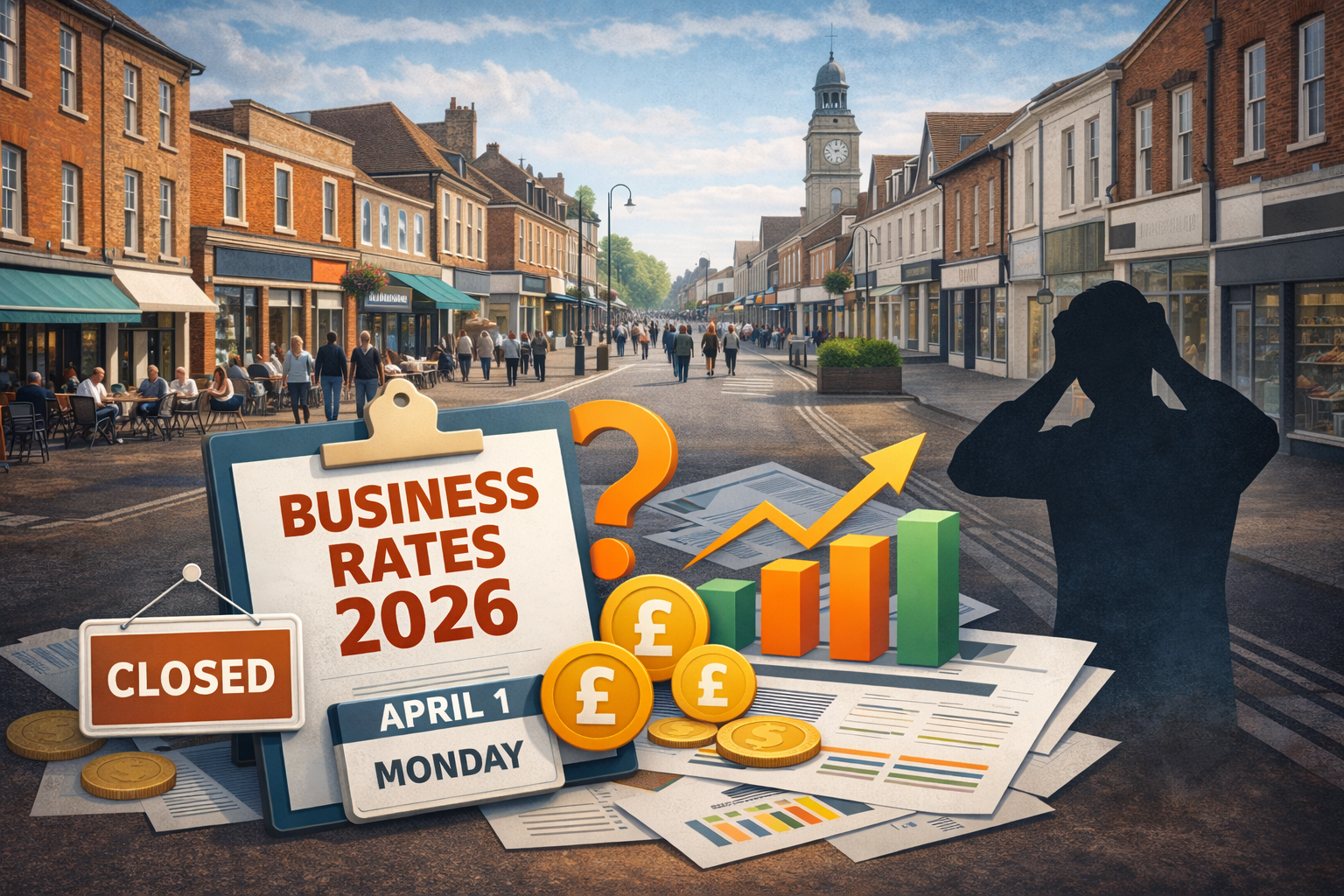As the lines between traditional restaurants and fast food/takeaway establishments blur, embracing an omnichannel approach has become essential for staying competitive in the F&B industry. By offering multiple channels for customer interaction—whether it’s dine-in, online ordering, or delivery—businesses can reach wider audiences and enhance customer experiences. However, success in this space requires more than just multiple touchpoints; it demands strategic decisions backed by data.
Leveraging footfall insights and demographic data, restaurants can optimize site selection, benchmark the performance of existing locations, and implement targeted marketing campaigns. Understanding when and where customers are most likely to engage with your brand also enables businesses to optimize their opening hours, ensuring maximum efficiency and profitability. With the right data-driven strategies, F&B businesses can navigate the complexities of the omnichannel landscape, driving growth and brand loyalty.
Introduction
Historically, there has always been a clear distinction between restaurants and fast food/takeaway establishments, with two separate business models targeting different audiences and requirements. Restaurants typically offer a dine-in experience, catering to customers who want to enjoy a food experience, socialise, and receive great service. Fast food/takeaway brands, have traditionally focused on quick service and convenience, often catering to customers who prioritise speed over the dining experience.
Over the past two decades, the lines between these models have blurred. Fast food/takeaways have become even faster and more convenient through order and pay apps available on all major smart devices, with many now offering on-site dining options, such as McDonald’s and Greggs. Similarly, restaurants have recognised the value of extending their cuisine beyond the dine-in experience, leveraging third-party delivery platforms like Just Eat, Deliveroo, and UberEats to compete in the fast food/takeaway market. This shift highlights the growing importance of offering a seamless and consistent omnichannel experience to meet evolving consumer expectations.
What is Omnichannel?
In the food and beverage (F&B) industry, omnichannel offers customers multiple channels to interact with and purchase from a brand, whether it’s through in-person dining, online ordering, or delivery services. In today’s fast-paced world, customers expect to be able to make near-instant purchases whenever and wherever they want or need.
Reaching Untapped Business
Embracing the omnichannel approach is not only essential for F&B businesses to stay competitive but also to expand their reach into previously untapped markets. The omnichannel strategy operates on a simple principle: the more channels you offer, the larger your reach and the greater the potential for business growth. However, the success of this strategy is closely tied to understanding the geographic and demographic layout of each location to ensure your brand is within delivery range of your target audience.
Physical locations remain crucial, but additional channels like Just Eat, Deliveroo and UberEats provide new revenue streams without the upfront cost of opening a new site. The revenue generated from these channels can then be reinvested into opening new locations, further expanding the business’s reach and creating a positive feedback loop of growth.
Leveraging Footfall Data for Strategic Decisions
Understanding footfall patterns is vital for optimising restaurant performance and making informed decisions about new site locations. Footfall data provides insights into how many people are passing by or entering a location at different times, which can be instrumental in site selection, marketing and operational strategies.
Leveraging location insights that help identify high-traffic areas is fundamental to ensuring the success of your new sites. By analysing footfall data, businesses can benchmark the performance of their existing restaurants against location, allowing them to make data-driven decisions to improve operations and customer engagement. By understanding peak footfall times, businesses can optimise their opening hours to match customer demand, reducing overhead costs and maximising revenue.
Enhancing Customer Experience
Customers associate F&B brands with value characteristics, whether it’s the speed of service or quality of ingredients. An omnichannel approach is not just about providing multiple payment methods; it’s about ensuring a unified, seamless and positive customer experience across all channels, which in turn fosters brand loyalty. By aligning all channels to consistently reflect the brand’s core values, businesses can reinforce their desired brand image and encourage repeat business.
Personalised Marketing Through Data
With access to diverse data points such as in-app purchases, third-party fulfilment, and on-site transactions, F&B businesses can gain a deeper understanding of customer spending habits. By utilising geographic and demographic data, marketing efforts can be more precisely targeted to the clientele most likely to engage with the brand.
For example, Huq’s location data can help restaurants identify key demographic segments within a specific area, enabling them to tailor their marketing messages accordingly. Social media can further amplify these efforts, allowing restaurants to reach customers with personalised, targeted marketing campaigns that highlight their closest locations or special offers. In fact, 45% of people have tried a new restaurant based on recommendations they’ve encountered on social media, underscoring the impact of targeted marketing in the F&B industry.
Omnichannel Cross-Over
So what does this all mean for the customer? Ultimately, the omnichannel approach puts the customer in control of their journey, allowing them to choose how they want to interact with the brand based on their preferences. Whether ordering from a person on-site, online for collection, online for delivery, or directly to their table via an app, customers now have more options than ever before.
Restaurants and bars such as All Bar One, Bar Soho, Greene King, Nando’s, and Wetherspoon have embraced this trend by implementing “Order and Pay” apps. These apps allow customers to input their table number, order directly from their smart device, and pay the bill without needing to visit the bar. Similarly, fast food/takeaway businesses have long benefited from the convenience of online ordering, which helps manage in-store queues while still handling a high volume of orders.
Even traditionally on-site F&B providers, like cafes, have embraced the omnichannel approach. For example, Costa Coffee has launched an app that allows customers to order and pay for their takeaways ahead of time, reducing queue times and catering to the “grab & go” market. Additionally, Costa Coffee’s automated dispensing machines offer customers the convenience of purchasing their drinks via card in locations where staffed premises may not be commercially viable.
Conclusion
Whether ordering from a physical site, online for collection, ordering to a table via an app, online for delivery, or from an automated dispenser, maintaining a unified brand experience across all channels is critical to omnichannel success.
F&B businesses must be aware of the spending behaviour and demographic makeup of the area when opening a new physical location. However, the omnichannel approach means that it’s equally important to consider the demographic and spending data within the surrounding area, as this will determine the suitability of the pricing model and provide insights into brand popularity based on customer analytics. For “grab & go” businesses, ensuring that the site is conveniently located for the target clientele, such as en route to public transport or within a commercial district, is essential.
Even for automated machines, which are not staffed on a full-time basis, the associated costs of maintaining and restocking the units, as well as fees to landlords for operating on their premises, must be carefully considered. As such, it’s crucial to place these machines in locations where they will have the most significant impact.
With the support of location insights and footfall data, businesses can make informed decisions to enhance their omnichannel strategy, optimise operations, and drive growth. The omnichannel approach allows F&B businesses to promote their brand in ways that would be impossible through single channels alone, offering a cost-effective means of expansion and sustained success.
Week 41 Weekly Wrap: Footfall Trends and Footfall Analytics Insights
13 November 2025
A detailed review reveals a 7.1% rise in footfall retail at shopping centres alongside intriguing footfall data trends.
0 Comments7 Minutes
UK Local Retail Centres – Week 44, 2025 Performance Update with Location Analytics Insights
13 November 2025
Week 44 shows a steady recovery with a 4.7% weekly increase. Advanced location analytics and refined location intelligence drive growing consumer interest.
0 Comments5 Minutes



![The Benchmark Infographic for Weekly Wrap Week Ending [object Object]](https://huq.io/wp-content/uploads/2025/11/wrap_featured_image.png)
![The Benchmark Infographic for Local Retail Centres Week Ending [object Object]](https://huq.io/wp-content/uploads/2025/11/week_44_2025_local_retail_centres-scaled.png)

